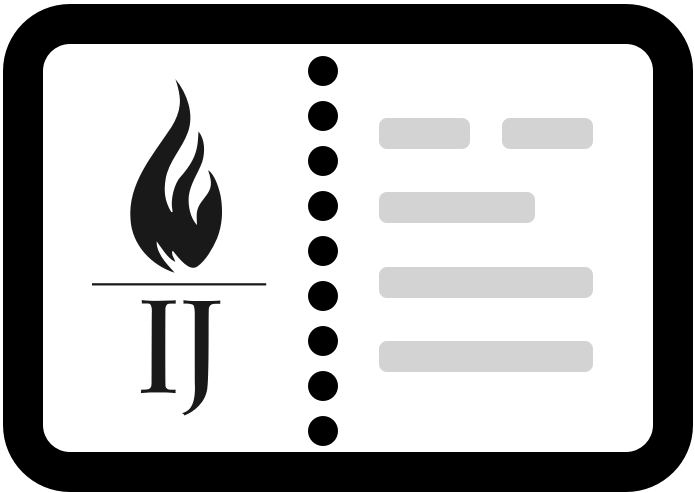Report: License to Work
Occupations
Abbot Brown in the wood-working shop at at St. Josephs Abbey in Covington, La. Louisiana told the monks they needed a license to build wooden caskets in the shop and sell them to the public.
Table 1 provides the complete list of the 102 lower-income occupations included in this report. Details on creation of this list and data collection can be found in the methods appendix.
The list covers a diverse collection of occupations. Some serve the needs of children, such as child care workers, preschool teachers and teacher assistants. Others come from the health care sector, like dental assistants, opticians, psychiatric workers and dietetic technicians. The service sector is well represented with occupations including barbers, bartenders, cosmetologists, massage therapists, manicurists and skin care specialists, as are the building trades and the transportation sector.
Some of these occupations are commonly recognized as licensed, such as barbers and contractors, while others may come as a surprise—home entertainment installers, florists, interpreters for the deaf, interior designers and upholsterers, to name a few. Some occupations, such as milk sampler, conveyor operator, still machine setter and various forms of testers, may be unfamiliar altogether. The Occupation Profiles section of the report provides definitions drawn, except where noted, from the Dictionary of Occupational Titles (www.onetonline.org) and further details on each occupation.
Notably, about half of the occupations on the list offer the possibility of new business creation. While individuals in a number of these occupations necessarily work for others, such as bus drivers, emergency medical technicians and various kinds of assistants, in about half of the occupations studied, practitioners can start their own businesses. Occupations with opportunities for entrepreneurship include the cosmetology trades (cosmetologists, barbers, manicurists, makeup artists and skin care specialists), construction trades, massage therapists, mobile home installers, taxi drivers and chauffeurs, animal breeders and trainers and tree trimmers.
Indeed, about one-third of the 102 occupations are construction trades, such as masons, glaziers, painters and cement finishers, and in these trades, only those who act as contractors and have their own business need a license. For instance, painters who work for contractors are not licensed, but in many states, painting contractors are licensed.
The inclusion of these occupations gives a window into how licensing affects not only job prospects but also entrepreneurial activity. Requiring a license for someone who wants to set up a business as a painter or glazier limits new business creation. And because many contractor licenses have experience requirements, they effectively force those wishing to start their own businesses to apprentice with others—for an amount of time determined by the government—before doing so.
Also note that contractor licenses usually vary according to whether the work is performed in a residential or commercial setting. Since the license requirements are different, we treated these as distinct occupations. For residential work, a residential license is required. These are generally easier to obtain and are required in fewer states. For commercial work, either a commercial license specific to the specialty (such as painting or cement finishing) is required or a general contractor’s license.11
Demographically, the people who work in the 102 low- and moderate-income occupations studied are somewhat different than the general population, as shown in Table 2.12 By definition, they make less money; they are also more likely to be male and racial/ethnic minorities and to have less education. Particularly noteworthy is the percentage of low- and middle-income workers with less than a high school diploma—15.7 percent. As documented below, a number of the 102 occupations studied require the completion of at least 12th grade, a requirement that effectively bans a substantial number of people from those occupations.
11For both residential and general/commercial licenses, smaller projects or businesses that make under a fixed amount annually may be exempt in some states. Also, in states with both residential and general/commercial licenses, joint licenses may be available for those who wish to work in both settings without obtaining two separate licenses.
12http://www.bls.gov/cps/. Demographic numbers were extracted from the 2011 March CPS supplement, the most recent March supplement as of this report’s writing. The numbers in Table 2 should be read as estimates. First, the CPS is based on a sample rather than a census. Second, not all of the occupations included in this report are measured separately by the CPS. Some are grouped together with similar occupations, such as auctioneers with other sales workers. In such cases, we elected not to include them in these estimates, as the numbers would include people in occupations not covered by this report. Thus, the final number of occupations from our report covered by the CPS was 55. Third, some of the occupations had rather small sub-group sizes in the CPS sample. Although we used the CPS March supplement sample weights in the calculations, some of the base sub-group sizes are still small, making for estimates that are less precise than occupations with larger group sizes. Fourth, even though we omitted occupations grouped with other similar occupations, there are still some occupational titles included that are “nested” within a larger category. For example, dietetic technicians are nested within the dietician category. This means some dieticians inevitably ended up in these demographic estimates. Finally, the estimates may be biased somewhat toward occupations that are more “established” or widely recognized. For example, “cross connection tester” was too arcane to be listed separately in the CPS, particularly as compared to, for example, contractor occupations or personal services, such as barbers, cosmetologists and the like. A manifestation of such biases may be evident in the gender percentages. Since traditionally male-dominated occupations represented a little more than half of the occupations in the list used for the demographic calculations, the striking difference in the gender distribution may be somewhat skewed.



